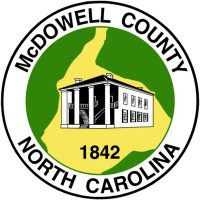A few people have asked me about geese control...Here are some solutions for your geese problems. To control geese a COMBINATION of these methods are necessary. Here they are:
1) NOISE
Under best conditions, 3 - 4 strategically placed cannons may protect up to 25 acres from goose depredation. Many of today's newer models of cannons come with variable timers and rotators that increase effectiveness. Stationary noisemakers, such as cannon, should be moved every 2 - 3 days to prevent habituation by geese.
Mylar tape or birdscare tape might work as well. It is a reflective piece of material that is bright red on one side and bright silver on the other. Feed and Seed stores should have in stock or order for you. Remote controlled airplanes can scare off geese and has had some success.
Another type of auditory approach is use of pyrotechnics, such as whistlers, noise bombs, shellcrackers, and screamer or banger rockets. These firecracker-like devices are shot from a hand-held pistol or 12-gauge shotgun out over a group of geese on land or water where the projectile then explodes. Some of these devices have a range of about 50 - 75 yards. Always check local regulations (police/sheriff’s dept) to be sure of noise ordinances and let them know of your intention to use these materials so that they will be aware of the activity and avoid an unnecessary response to calls of "shots being fired."
2) TASTE
Goose Chase and Fruit Shield are nontoxic bird repellents that contain 26.4% active ingredient, methyl anthranilate, by weight. Methyl anthranilate, or 2-aminobenzoic acid methyl ester, is an aromatic acid ester that occurs naturally in grapes (although the methyl anthranilate in these products is synthetically produced). Methyl anthranilate is a food-grade compound that is used to impart "grape" flavor. Apparently, this flavor is offensive to birds, and they will not eat vegetation treated with it. This product has a UV coloring agent that, according to the manufacturer, the geese are able to see and associate with an area that has been treated with the feeding deterrent. Follow directions and you shouldn’t have a problem with it leaving your property and entering a local waterbody. Be sure to work closely with timing applications with mowing and watering schedules.
3) FEAR WITH WATER
Water Spraying Animal Repeller is a good deterrent because it senses motion and sprays a 3 to 4-second burst of water then resets. Spray coverage can be adjusted from a narrow 10° coverage to 360°, and the 35-foot range lets you place the device where it makes the most sense. Effective on dogs, cats, raccoons, deer, etc. Simply pull up the device, move it to a different location, and turn the water on. Soon, animals won't know where they'll be sprayed from, and will be wary of entering the protected area. Requires a 9V battery (sold separately), which powers the unit for approximately 6 months under normal use.
4) IRRITATING FEEL
Sticky, non-toxic material to stop bird roosting because it is extremely irritating to roosting birds; available in caulk tube; inexpensive. Varying product names: Bird Tanglefoot, Bird-Proof Gel or Liquid. Harmless to metal structures, sealed masonry and ornamental metals, works in any weather, indoors or outdoors, literally anywhere: on water tanks, trees, shrubbery, shipping docks and railroad sidings, yards, parking lots, etc. Apply to roosting edges ledges, windowsills, gutters, cornices, ornamental copings and protruding beams-any surface where birds roost or perch. For trees, bushes, shrubbery and most broad surfaces that would make cartridge application impractical, spray on Bird-Proof Liquid Spray. Keep birds away from parking facilities, trees, bushes, shrubbery and most broad surface areas with Bird-Proof.
5) EXCLUSION
Typically Canada geese prefer to have direct access from the water to walk onto the shoreline.
-Do the banks slope into the pond (this type of bank makes it easy to walk onto the shoreline or is there a straight drop off?
-Obstructions at the shoreline. This process involves the planting of certain types of vegetation or installation of fencing.
-Add in more plants around the banks or leave a buffer area 10-20 ft wide (example list provided). Modifying uninterrupted shorelines with shrubs or boulders every 10 to 20 yards, may reduce an area’s attractiveness to geese, as well as to other waterfowl and shorebirds.
-If a fence is present at the shoreline then this obstruction can prove successful in limiting the presence of geese on the property. Fence ponds prior to the molt (loss of flight feathers in early summer) to prevent access to water and discourage geese from remaining in the area when they are flightless.
When Canada goose access denial to a water source is required, then serious consideration should also be given to the installation of an overhead “grid system” in conjunction with a perimeter fence. This may not be practical for large ponds.
6) POPULATION REDUCTION
Federal and state permits are needed to handle geese, or destroy eggs or nests.
Thanks to Wendi Hartup, Extension Agent, Forsyth County, for providing this information.






